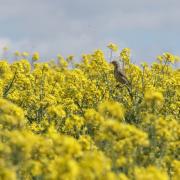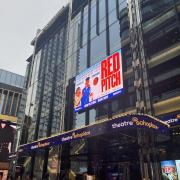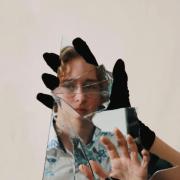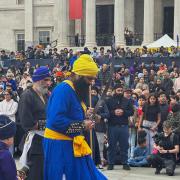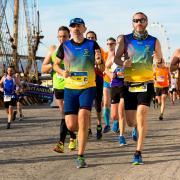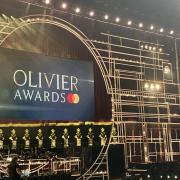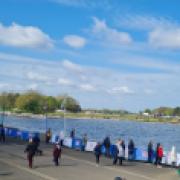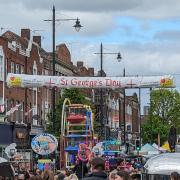
Friendship comes in all shapes and sizes.
This seems to be the essential point of the latest subject in a series of thematic explorations of the Collection at the National Portrait Gallery. It is something we can all relate to, regardless of our interest in art, or lack thereof. The compilation includes both historical and contemporary portraits with the “intention of celebrating a friendship” and “to capture a special connection between the sitters”. This display showcases figures from hugely varying fields, from politics to business, sport to the arts. The diverse range of works includes photographs of Elizabeth Taylor with David Bowie and Yves Saint Laurent with Loulou Falaise. What is striking is the way all these different images are tied together with a heart-warming sense of intimacy and companionship. Friendship is a complex subject, full of intricate dynamics and emotions, but universally, it is regarded as an affectionate and close relationship between people who have a mutual understanding of each other. It can come in many forms, and has the fundamental ability to transcend things that cause problems in everyday life; such as race, nationality, gender, disability and social class. In the words of the famous British novelist C.S. Lewis, friendship is “one of those things which give value to survival”. It seems to be a concept with everlasting relevance, a subject that will never lose interest because it can endure the constant development of our modern world.
Friendship portraits are characteristically more relaxed and light-hearted in comparison to other group portraits. Their purpose is to show the happiness and comfort felt in the presence of close friends, with a strong sense of love and tenderness. There is no specified media, style or colour scheme and the display at the National Portrait Gallery includes all kinds of portraits – photographs, paintings, line drawings. These come in both monochrome and full colour, creating an interesting and compelling collection.
One of the most notable pieces is a coloured photograph of George Harrison and Ravi Shankar, the former being the Beatles guitarist and the latter an Indian sitar virtuoso. The two friends are pictured sharing a shawl, gazing placidly in opposite directions in a state of amicable silence. Harrison once described Shankar as ‘the person who has influenced [his] life the most”, and when the pair met in 1966, Shankar became Harrison’s mentor and friend. In turn, Shankar’s own music was introduced to a wider Western audience. The photograph was taken by Clive Arrowsmith in 1974 at Friar Park, Harrison’s home and the place where Shankar’s orchestra were rehearsing before a performance at the Royal Albert Hall. The two went on to produce an album together named Collaborations.
Another work of particular interest is a photograph of Dame Tanni Grey-Thompson in her wheelchair, being embraced by Debbie Jevans, a former tennis player and sports administrator. Grey Thompson is the most decorated British wheelchair athlete, with 11 gold medals between 1992 and 2002. This portrait is thoroughly symbolic of friendship, which is a core value of the Olympic Games, along with respect and excellence.
This is, however, not all there is to see on display. There is a comical tribute to the Three Witches in Macbeth, who were indisputably attached to one other. The piece is a painting by Daniel Gardener in 1775. Furthermore, history enthusiasts may be excited to see the earliest known oil self-portrait produced in England. It was produced in 1554 by Gerlach Flicke and illustrates his own face alongside the face of his newfound friend: Henry Strangwish. Interestingly, it was painted when both men were in prison, presumed to be the Tower of London. Strangwish had been imprisoned for piracy, whereas Flicke’s own crime is unknown. Even David Hockey has contributed, with an ink portrait of the composers Peter Maxwell Davies and Harrison Birtwistle.
Picturing Friendship is undoubtedly a must-visit at the National Portrait Gallery, with a wide range of things to see. There is something that will appeal to each person who visits, a feeling or emotion that resounds deeply with every individual viewer. It can be found in Room 16, and perhaps most importantly, it is free, just as true friendship is.











